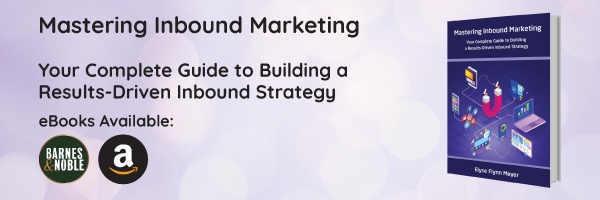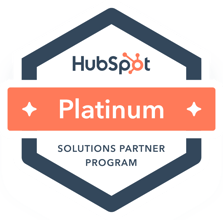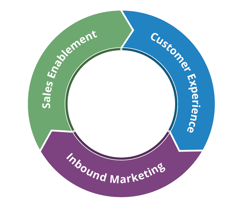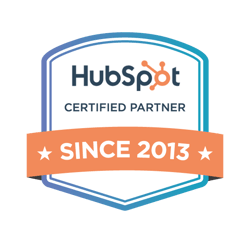Inbound marketing is a powerful strategy focusing on attracting customers through valuable content and personalized experiences rather than traditional advertising. Mastering inbound marketing is essential for companies looking to build long-term relationships and drive sustainable growth. This blog will guide you through the fundamental principles of inbound marketing, from understanding your target audience to creating engaging content and leveraging SEO and social media. By following these steps, your company can effectively draw in potential customers, convert leads, and nurture them into loyal brand advocates. Let's dive into the strategies that will elevate your inbound marketing efforts.
- Determine your buyer personas: Identify your target audience to craft an inbound marketing plan that specifically connects with your ideal audience and prospective customers. Start by thinking of their challenges and why they may be looking for your product or service. Then, determine how you can guide them on the buyer’s journey through content marketing.
- Develop your intended buyer’s journey or decision-making journey: Consider how your prospects go through their research and education process when evaluating your company against your competition. Consider where your prospects are in the Awareness, Consideration, and Decision Stages, and develop a plan to help them keep your organization in the evaluation process as they progress through their buyer’s journey.
- Identify your inbound marketing goals: Set your inbound marketing goals over the first 6 – 12 months. Focus on website sessions, the number of leads you need to generate to hit your revenue number, and the number of customers you want to secure in that timeframe. Then, you can break your goal down based on email engagement, social media, organic website traffic, content engagement, and more. Start at 40,000 feet so you can see the big picture. Remember, inbound marketing is a long-term strategy.
- Develop your blogging strategy: Any great inbound plan includes a blogging strategy. Develop your blogging content plan based on your target keywords, personas, and the content and topics your audience searches for online. Consider a 3-month program, so you have a defined content calendar that can be adjusted, as needed, based on changing business goals. Remember, always include elements for conversion, such as hyperlinks to landing pages and calls-to-action to downloadable resources. Your aim is to give the blog reader more content to help them move through the buyer’s journey. Once you start blogging, ensure you have a plan and process to drive traffic to your blog. This includes a blog subscription option, regular email notifications to your subscribers, and an active social media calendar. You will quickly see the value of your blogging efforts in driving traffic, leads, and customers to your website.
- Determine your inbound conversion plan: Assess your content and the additional content you need to create that will be valuable for your prospects. A content audit ensures you don’t reinvent the wheel if you already have content developed for specific phases of the buyer’s journey. Remember, when asking a prospect for their contact information, you must provide them with something of high value, such as an eBook, whitepaper, checklist, consultation, and more. When creating your landing pages, be mindful of the questions you ask on the conversion form to ensure you receive the prospect’s contact information without asking too many questions that can become a barrier for them to convert. Once you have 2 – 3 lead offers and landing pages, you can embed calls-to-action and pop-up forms on your website to capture leads.
- Leverage social media: Use social media to connect with prospects who may not yet be familiar with your brand. Choose the social media platforms that align with your target audience and buyer personas. You can research where your potential customers spend the most time. Always ensure your social media profiles are optimized so prospects can learn more about your company through your profile, keywords, hashtags, and more. Then, begin posting regularly on your social media channels and identify the content that most resonates with your target audience.
- Use email marketing and automation: Once you start building your database, it’s essential to stay engaged with your subscribers so your company stays top of mind. Start with single emails to your database promoting one of your content offers, announcing an upcoming event, or just sharing your latest blogs and thought leadership articles. From there, you can build automated email sequences or marketing automation programs to bring prospects through the buyer’s journey with regular email content. For example, when a prospect subscribes to your database, you can send them a welcome email, an eBook, a checklist, and an offer to schedule a consultation.
- Develop your inbound sales strategy: Connect your inbound marketing plan with your sales plan to work together toward the same goal of driving revenue. Involve your sales team in the inbound marketing process so you can determine when a lead should be handed to sales. You can also provide your sales team the content they need to engage and advise prospects through their buyer’s journey. Don’t skip this part of the process because sales and marketing must constantly align. This ensures that your marketing and sales strategy is implemented most effectively, working toward the end goal of revenue generation and customer acquisition.
- Improve your customer experience: Identify your entire customer experience process. Your customers are your greatest asset, so include them in your inbound marketing program. Create your customer onboarding process and then document and share it with your sales and marketing teams. From there, you can start to gauge customer happiness through surveys and other touchpoints. This will give you the data you need to determine which customers are happy, which customers may be disengaged, and how you can connect with your customers more meaningfully.
- Analyze your metrics and data sources: Track your metrics to determine what works and what needs improvement. Define the most important data points to track on an ongoing basis, including website traffic, leads, customers, social media, email marketing, landing page conversions, blog engagement, and more. Set up these reports in a simple dashboard format so you can quickly and easily see these metrics in your marketing technology platform. Data is the most critical asset in your marketing mix.
- Choose your technology platforms: Assess the technology tools to help you implement and manage your inbound marketing program. Make a checklist of the essential tools for your team, including website hosting, social media, email marketing, marketing automation, sales enablement, customer service automation, and more.
- Build your inbound team: Develop an action plan for building your inbound team. Depending on your organization’s size, determine if you want to manage your inbound marketing program in-house, through an outsourced partner, or a mix of both. If you are managing your in-house inbound marketing initiatives, consider the roles you need, including content, strategy, technology management, and more. If you are outsourcing your inbound marketing initiatives, find a partner with proven skills to create a comprehensive strategy, implement it efficiently, and be a true business partner aligned with your growth efforts.
- Assess your marketing operations: Create an operational process for your inbound marketing campaigns. Marketing is not a one-time effort. Your marketing efforts should continuously improve and evolve. Start by developing your campaign roadmap, integrating your technology tools, and mapping your marketing assets. This will make your marketing plan more streamlined and repeatable over time.
As you can see, inbound marketing is comprised of many small tactics, tools, and techniques that build upon each other to drive substantial growth. Remember, the world of marketing is continually changing. An inbound approach to marketing will help you stay top of mind with prospects and drive revenue growth for your organization. When you develop your inbound marketing strategy, make sure to incorporate all the aspects we have reviewed throughout this inbound marketing journey to ensure you are:
- Attracting your target audience
- Creating content that resonates with your audience
- Converting your website visitors into qualified prospects
- Engaging leads through the buying process to become engaged customers
Inbound marketing is not just about attracting leads. It's about creating a personalized journey for your audience. You can establish a strong connection and build trust by defining your content and messaging to align with where your prospects are in their buyer's journey. This long-term strategy will enhance your brand messaging and result in significant growth for your organization. Through the seamless integration of marketing, sales, and customer experience, you can drive sustainable growth and cultivate a loyal customer base. Embrace the power of inbound marketing to tailor your approach, engage leads effectively, and ultimately convert them into satisfied customers who will advocate for your brand.
Are you looking for ways to optimize your inbound strategy? The "book "Mastering Inbound Marketing: Your Complete Guide to Building a Results-Driven Inbound Strategy," written by Elyse Flynn Meyer, Owner & Founder of Prism Global Marketing Solutions, covers every aspect of the inbound marketing methodology, including the revenue generation trifecta of marketing, sales, and the customer experience. Check out the book to see how to most efficiently and effectively develop, implement, and maintain your inbound strategy.


__Square.png?width=250&height=250&name=Marketing_Hub_(1)__Square.png)




.png?width=250&name=diamond-badge-color%20(1).png)
